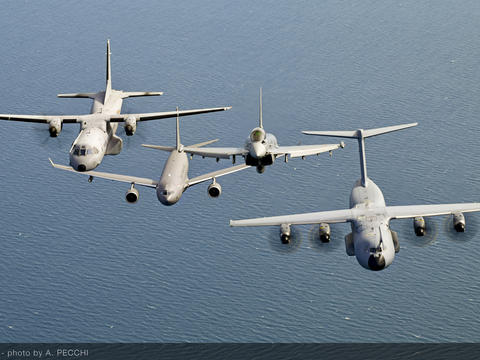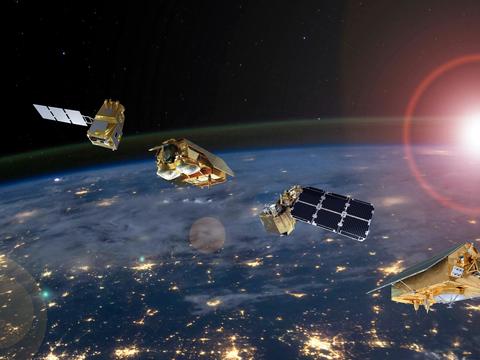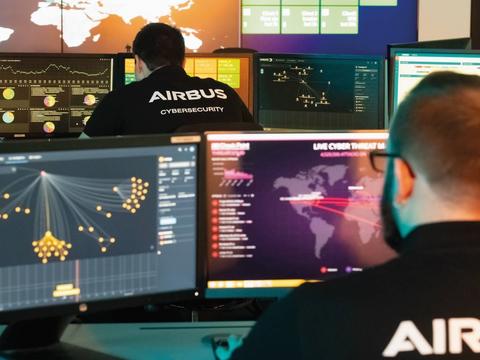Information warfare is an ever-present fixture of our times, with online deception spreading rapidly. Airbus leads the EUCINF project, a European Defence Fund initiative to provide EU member states with key capabilities to defend their information space.
In today's conflicts, the digital realm is as much a central frontline as the physical world. Here, both state and non-state actors weaponise information by launching disinformation campaigns that polarise societies, undermine institutions and destabilise nations.
The scale of this threat is significant. Since its establishment in 2015, the EUvsDisinfo project, run by the European External Action Service, has debunked over 19,000 cases of disinformation, including campaigns that aim to sow mistrust around issues such as elections and public health.
Governments are also responding with their own "digital firepower." France, for example, has launched an X account called "French Response" that counters foreign disinformation targeting the country.
Such efforts demonstrate that the digital information space is a key consideration for defence. How is technology supporting the fight?
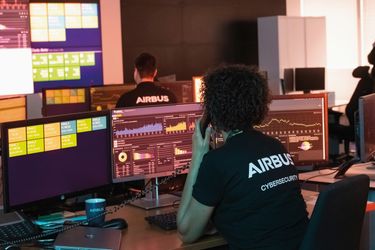
Airbus is a key partner supporting governmental agencies in information warfare and cyber security.
From disinformation to actionable intelligence: A 3-step process
To tackle a topic as complex as information warfare, it is essential to understand its language. Although the terms are often used interchangeably, 'disinformation' and 'information warfare' are distinct concepts. Annabelle Travers-Viaud, EUCINF Project Manager and Coordinator at Airbus Defence and Space clarifies: "Disinformation refers to creating and spreading false content. Cyber information warfare [CIW] is bigger than that. It is a coordinated strategy that builds upon disinformation and cyber attacks but also adds manipulation, psychological operations [PSYOP] and physical actions to achieve a specific goal."
Airbus has long been a key partner for governmental agencies, providing the tools and expertise needed to navigate this complex world. Building on solutions like the Fortion Massive Intelligence platform, the company helps turn raw data into the critical knowledge needed for strategic decision-making.
"Trying to track disinformation manually is like trying to count every grain of sand on a beach – it's impossible," says Annabelle Travers-Viaud. “But you need the full picture to understand the intentions of an actor and what’s at stake.” Therefore, humans and machines must work together. Here’s what this looks like:
1. Data ingestion: The foundation for the analysis is OSINT, short for open-source intelligence. It involves gathering data from publicly accessible sources, such as social media and news sites. The raw data comes in many different formats and must be normalised and structured for analysis.
2. Analysis and detection: In this step, human expertise and artificial intelligence come together. AI algorithms sift through vast amounts of content to identify fake images, fake audio, or toxic narratives. Analysts then leverage AI tools to connect the dots, exposing patterns and raising alerts about the spread of false narratives.
3. Action and response: Finally, the analysis is transformed into actionable intelligence that can be shared with allies and used for mission planning. Concrete actions may include a detailed report for policymakers or a plan for an active countermeasure, such as a campaign to disseminate factual information.

EUCINF: A united European defence against disinformation
In our fast-paced world, a fragmented approach to information warfare in general and disinformation campaigns in particular is no longer adequate.
The EUropean Cyber and INFormation warfare toolbox (EUCINF) project, an initiative designed to consolidate the defence capabilities of its member states, was awarded funding by the European Union under the European Defence Fund (EDF).
Coordinated by Airbus, the EUCINF project unites the digital expertise of 22 companies from 12 countries.
The overarching goal is to provide EU member states with next-generation capabilities to defend their information space. Annabelle Travers-Viaud explains: "With this project, we are laying the foundation for a powerful EU response to the information warfare requirements of our time. The project is about defining a framework of how different solutions from different companies can be brought together, creating a flexible, interoperable toolbox for European and national defence authorities.”
“We are adding specific AI-powered modules where they can provide genuine value, such as helping operators to automate tasks like writing reports. But we are not applying AI to everything." Annabelle Travers-Viaud, EUCINF Project Manager and Coordinator, Airbus Defence and Space
At the forefront of innovation
The EUCINF project, which runs until November 2026, has already reached several critical milestones. The design of the toolbox's core framework is complete, and the first of three major demonstrations for the sponsoring Ministries of Defence has been successfully concluded. With the next demonstration planned for early 2026, the project is moving swiftly from concept to tangible capabilities.
The final output will be a suite of prototype-level software components. Each component is being designed to perform a specific function - from data normalisation and embedding to mapping thousands of social media posts. Users could then go on to create customised workflows for themselves by chaining these components together.
“The modularity showcases a new paradigm for collective defence, encouraging nations to invest in and industrialise these tools to meet their specific goals,” concludes Annabelle Travers-Viaud. “EUCINF is only the beginning; a foundation for efficient collaboration across Europe when it comes to CIW.” Because in the battle for the truth, collaboration is not just an advantage — it is the only way forward.
Disclaimer for EUCINF project: Co-funded by the European Union. Views and opinions expressed are however those of the author(s) only and do not necessarily reflect those of the European Union or European Commission. Neither the European Union nor the granting authority can be held responsible for them.
The information contained in this document is the intellectual property of one or several of the companies as listed defined contractually. This information may be copied in whole or in part, by the Contributing Members for their own purpose, subject to the terms and conditions of the Consortium Agreement final version dated November 11th 2023. Any disclosure of this Information is subject to the written authorisation of the owning company or the companies except if this disclosure is authorised by the here above-mentioned contract in which case its terms and conditions apply to said disclosure.

Latest Defence news
Continue Reading

Spain orders 18 C295 transport aircraft
Press Release
Defence
The Spanish Ministry of Defence has acquired 18 Airbus C295 transport aircraft to replace the CN235 and C212 fleets of the Spanish Air and Space Force
International Training Centre: 15 years training the world's best military crews
Web Story
Defence

Airbus A400M: Landing where others can't to deliver more aid
Web Story
Defence

Combating information warfare: How Airbus is helping win the fight for the truth
Web Story
Defence
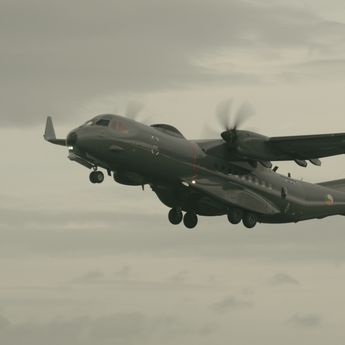
Airbus C295: How Ireland’s eyes in the skies help prevent illegal fishing
Web Story
Defence

